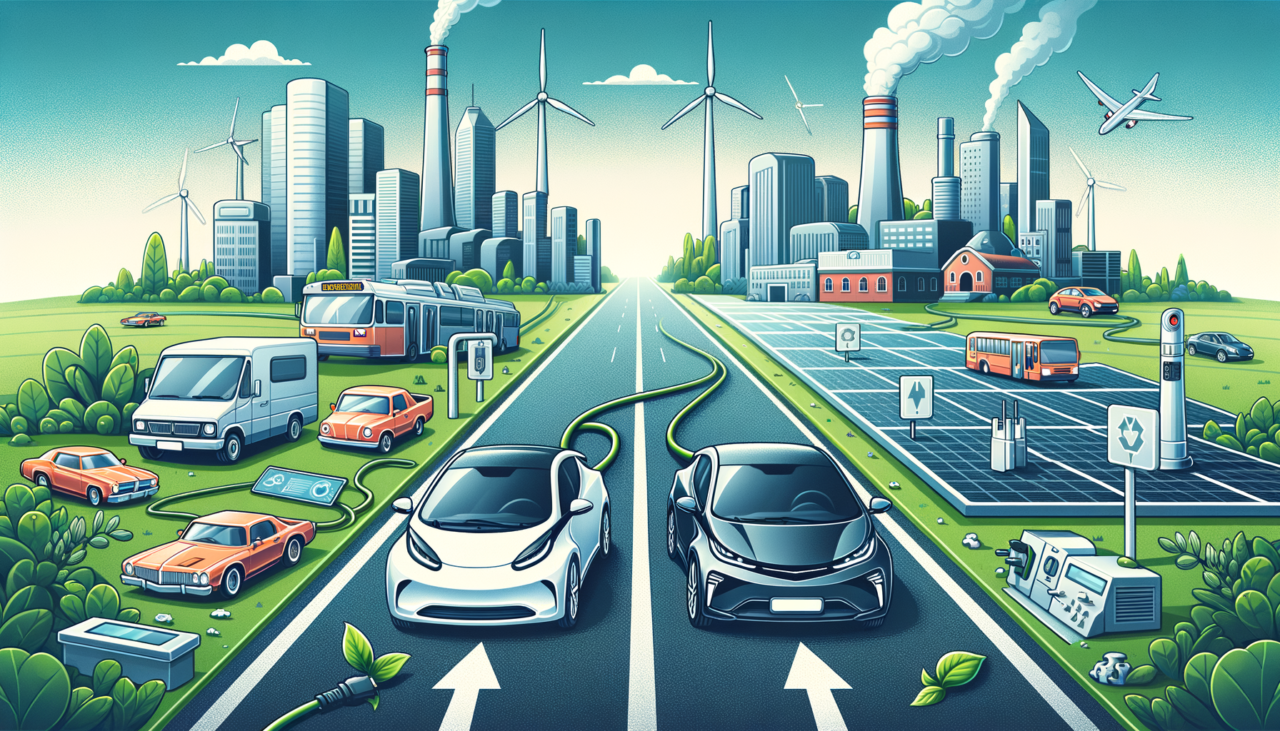Electric vs. Plug-in Hybrid: Navigating the Roads of Tomorrow
In the ever-evolving landscape of automotive innovation, the roads are paved with options that reflect our changing world. As we stand at the crossroads of technology and tradition, the choice between Electric Vehicles (EVs) and Plug-in Hybrid Electric Vehicles (PHEVs) is akin to selecting between two distinct yet equally fascinating journeys through the Sahara Desert. Each path offers its own set of wonders and challenges, much like the varied terrains of Egypt—from the bustling streets of Cairo to the serene stretches of the Nile.
Characteristics of Electric Vehicles (EVs)
-
Pure Electric Drive: EVs are powered solely by electricity, eliminating the need for a traditional internal combustion engine. This is akin to harnessing the pure energy of the sun, a resource that has sustained life across the arid deserts of Arabia for centuries.
-
Zero Emissions: Much like the whispering winds that sweep through the ancient pyramids, EVs glide silently, producing no tailpipe emissions. This contributes to a greener environment, reminiscent of the lush oases found throughout the Middle East.
-
Battery Range and Charging: The battery range of EVs can vary, with some models offering over 300 miles on a single charge. Charging infrastructure is expanding, much like the intricate irrigation systems that crisscross Egypt’s fertile lands.
-
Maintenance Simplicity: With fewer moving parts, maintaining an EV is like tending to a minimalist Bedouin camp; straightforward and uncomplicated.
-
Innovative Technology: EVs are equipped with cutting-edge technology, echoing the innovation seen in the ancient engineering marvels of the region, such as the Great Library of Alexandria.
Characteristics of Plug-in Hybrid Electric Vehicles (PHEVs)
-
Dual Power Sources: PHEVs combine an electric motor with a gasoline engine, offering flexibility akin to the versatile dromedary camels that traverse both desert and city with ease.
-
Reduced Emissions: While not completely emissions-free, PHEVs offer lower emissions than traditional vehicles, embodying the delicate balance of modernity and tradition found in the bazaars of Marrakech.
-
Extended Range: With the ability to switch between electric and gasoline power, PHEVs offer an extended range, reflecting the enduring endurance of caravan merchants crossing vast distances.
-
Charging and Fueling: PHEVs require both electric charging and gasoline refueling, much like the dual sustenance of date palms and fresh water that support life in the desert.
-
Adaptability: The adaptability of PHEVs mirrors the resilience of the desert tribes, who skillfully navigate the shifting sands and changing climates.
Comparative Table: Electric vs. Plug-in Hybrid
| Feature | Electric Vehicles (EVs) | Plug-in Hybrid Electric Vehicles (PHEVs) |
|---|---|---|
| Power Source | Fully electric | Combination of electric and gasoline |
| Emissions | Zero emissions | Reduced emissions |
| Range | Limited by battery capacity, expanding with technology | Extended range via gasoline engine |
| Charging/Fueling | Requires charging infrastructure | Requires both charging and gasoline refueling |
| Maintenance | Fewer moving parts, simpler maintenance | More complex due to dual systems |
| Technology | Advanced, with focus on innovation | Balances traditional and modern technologies |
| Cost | Generally higher upfront costs, lower operating costs | Lower upfront costs, variable operating costs |
| Environmental Impact | More sustainable overall | Intermediate sustainability |
Conclusion
Choosing between an Electric Vehicle and a Plug-in Hybrid Electric Vehicle is much like deciding between two paths in the ancient sands of Egypt. Both vehicles offer unique benefits and challenges that reflect the nuanced interplay of tradition and innovation. As we navigate the roads of tomorrow, let us draw inspiration from the timeless landscapes of the Arab world, where history and modernity coexist in harmonious balance. Each choice promises a journey filled with discovery and a step towards a more sustainable future, one that echoes the resilience and adaptability of the cultures that have thrived in this region for millennia.

Comments (0)
There are no comments here yet, you can be the first!